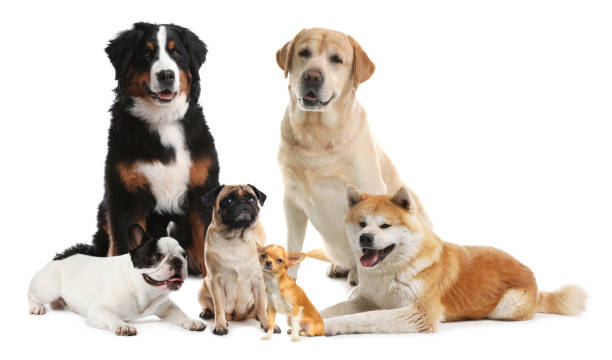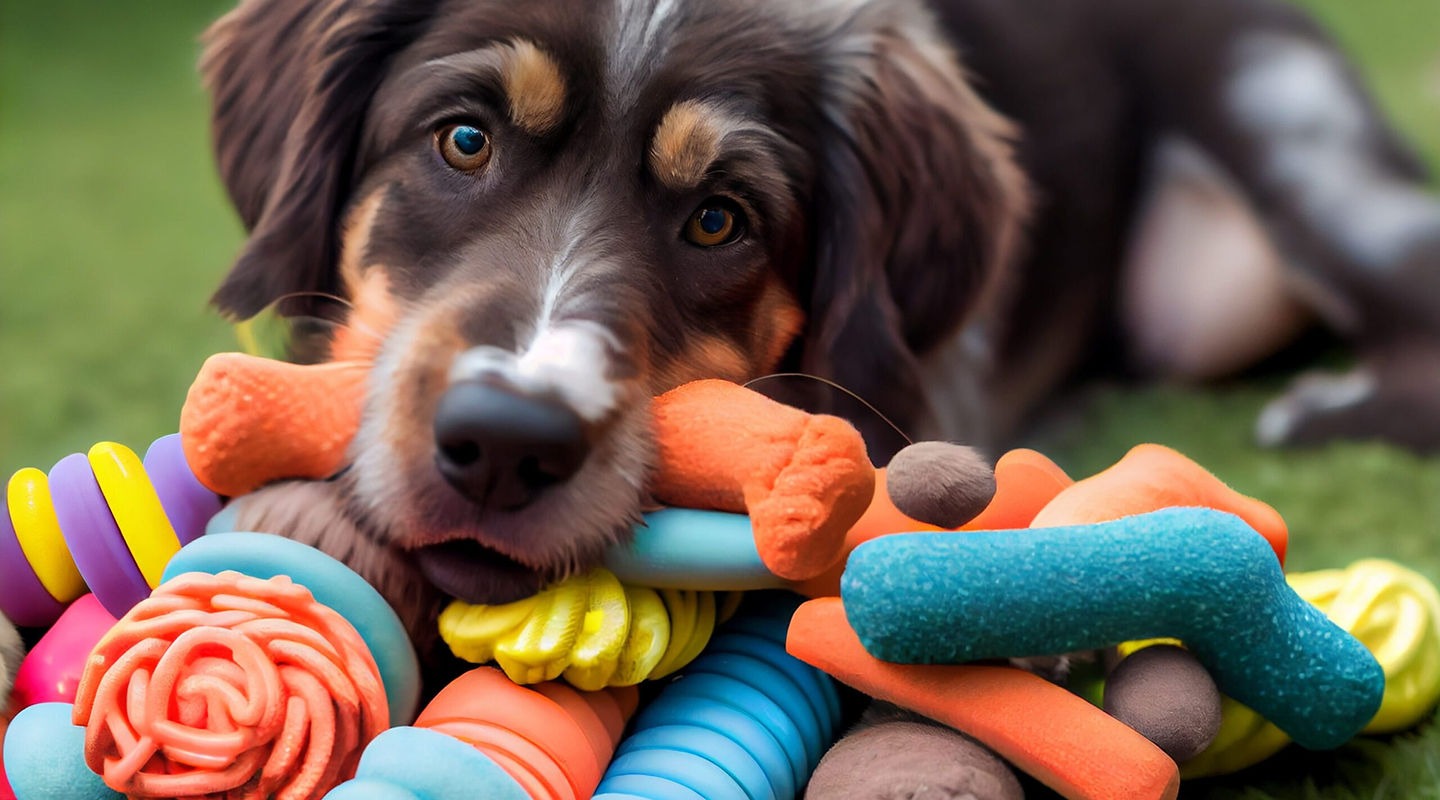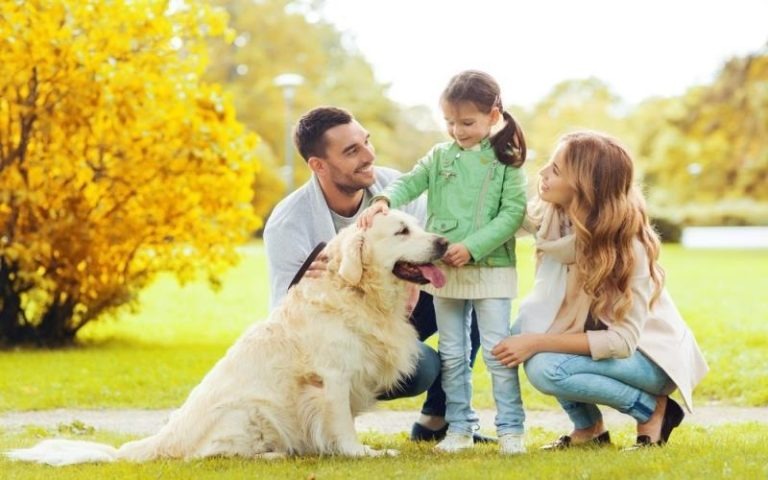
The Hidden Gems: Most Underrated Dog Breeds That Make Exceptional Family Pets
Discover lesser-known dog breeds renowned for loyalty, friendliness, and adaptability—perfect companions that enrich family life with unique traits often overlooked in popular canine selections.
🐶 Pet Star
28 min read · 18, Jul 2025

Introduction: Why Look Beyond Popular Breeds?
When choosing a family dog, many prospective owners gravitate toward well-known breeds like Labrador Retrievers or Golden Retrievers. However, numerous underrated breeds possess incredible qualities—gentle temperaments, intelligence, and adaptability—that make them fantastic family pets. These dogs often fly under the radar due to trends, media exposure, or misconceptions, yet they offer unique benefits that perfectly suit family dynamics. This article highlights some of the most underrated dog breeds that deserve a second look for anyone seeking a loving, dependable companion.
What Makes a Dog Breed Ideal for Families?
Temperament and Sociability
Family dogs need to be friendly, patient, and sociable. A breed that naturally bonds well with children and adults alike fosters a harmonious household.
Energy Levels and Exercise Needs
Matching a dog’s energy to a family’s lifestyle is key. Some families want a playful, energetic dog; others prefer a more relaxed companion.
Trainability and Intelligence
Intelligent, trainable dogs adapt better to household rules and provide an easier training experience for owners.
Health and Longevity
Breeds with fewer hereditary health problems and longer lifespans reduce long-term vet costs and emotional strain.
The Lagotto Romagnolo: Italy’s Truffle-Hunting Treasure
Origin and History
The Lagotto Romagnolo is an ancient breed from Italy, originally used as a water retriever and later developed as a skilled truffle hunter.
Why They Make Great Family Pets
Lagottos are affectionate, highly trainable, and hypoallergenic—ideal for families with allergy concerns. Their moderate energy levels make them playful yet manageable for children.
Expert Insights and Statistics
According to the American Kennel Club, Lagottos have shown excellent adaptability to family settings with minimal aggression and strong social bonds.
The Norwegian Lundehund: A Rare Nordic Wonder
Unique Physical Traits
With extra toes and incredible joint flexibility, the Norwegian Lundehund was bred to hunt puffins on steep cliffs.
Personality and Family Compatibility
Lundehunds are lively, curious, and loyal, forming strong attachments to their families. Their moderate size suits apartments and homes alike.
Challenges and Care Requirements
While they require a specialized diet and care due to predisposition to gastrointestinal issues, their affectionate nature makes the effort worthwhile.
The Kooikerhondje: The Dutch Companion with a Heart of Gold
Background and Heritage
Originating in the Netherlands as a duck decoy dog, the Kooikerhondje has a charming personality and striking orange-and-white coat.
Behavioral Traits
These dogs are alert, intelligent, and eager to please, thriving on family interaction and consistent training.
Suitability for Families with Kids
Known for their gentle demeanor, Kooikerhondjes enjoy playing with children and can adapt well to active family lifestyles.
The Tibetan Spaniel: A Small Dog with a Big Heart
History and Royal Roots
Historically companions to Tibetan monks, these small dogs served as watchdogs and companions in monasteries.
Temperament and Adaptability
Tibetan Spaniels are affectionate, intelligent, and low-maintenance, with a calm disposition ideal for families seeking a smaller pet.
Grooming and Health Overview
Moderate grooming is required, but their generally robust health and moderate exercise needs make them accessible for busy households.
The Cirneco dell’Etna: Sicily’s Agile Islander
Breed Origins
This slender, agile hunting dog from Sicily is relatively unknown outside its home region but offers great companionship qualities.
Behavior and Family Integration
Cirnecos are intelligent, independent, yet affectionate dogs that bond closely with their families and are excellent with children when socialized properly.
Exercise and Environment Needs
They thrive in active households that can provide daily physical and mental stimulation.
The English Toy Terrier: Elegance Meets Playfulness
Breed History
A Victorian-era lapdog, the English Toy Terrier is elegant, alert, and surprisingly energetic.
Personality and Interaction with Families
Despite their small size, they exhibit strong bonds with their owners, enjoying playful interactions and adapting well to various home environments.
Care and Training Considerations
Low grooming needs and high intelligence make them easy to maintain and train.
The Glen of Imaal Terrier: Ireland’s Underappreciated Family Guardian
Background and Characteristics
This sturdy terrier is less known than other terriers but offers a calm demeanor and strong protective instincts.
Temperament and Child-Friendliness
Glen of Imaal Terriers are affectionate with family and especially gentle with children, making them excellent watchdogs without excessive aggression.
Health and Exercise
Known for good health and moderate exercise needs, they fit well into varied family lifestyles.
The Swedish Vallhund: The Viking’s Versatile Companion
Historical Context
Used by Vikings as herding dogs, Swedish Vallhunds are energetic, intelligent, and eager to work.
Family Compatibility
They are affectionate, social, and thrive on family activities, though they require regular exercise to stay happy.
Training and Socialization
Their trainability and friendly disposition make them suitable for families willing to invest in consistent training.
Assessing Your Family’s Lifestyle in Depth
Choosing a dog breed that fits seamlessly into your family requires a realistic evaluation of your daily life. Factors such as your living environment, work schedules, activity preferences, and children’s ages play crucial roles.
- Living Environment: Families in apartments might favor smaller breeds like the Tibetan Spaniel or English Toy Terrier, while those with a large yard may consider more active breeds like the Swedish Vallhund or Barbet.
- Activity Levels: If your family enjoys hiking or running, high-energy breeds like the Norwegian Lundehund or Glen of Imaal Terrier can thrive. For more laid-back households, calm and moderate-energy dogs such as the Lagotto Romagnolo offer companionship without overwhelming exercise needs.
- Children’s Ages: Puppies or toddlers may require a dog with patience and gentleness, while older kids might handle playfully energetic breeds better.
Understanding these factors can prevent mismatched expectations that often lead to relinquishment.
Research and Meet the Breed: Tips for Prospective Owners
Before making a commitment, hands-on experience with the breed is invaluable. Here are practical steps to gain firsthand insight:
- Visit Breed-Specific Rescues: These organizations often have adult dogs embodying breed traits and can provide realistic expectations.
- Attend Dog Shows or Meetups: Interacting with multiple dogs and their owners reveals social and temperamental nuances.
- Consult Veterinarians and Trainers: Professionals who have worked extensively with certain breeds can highlight potential health or behavioral challenges.
- Request Breed-Specific References: Connecting with current owners offers honest, long-term perspectives.
This research phase ensures you select a dog that complements your family’s unique dynamic.
Prepare for Long-Term Commitment: What Underrated Breeds Demand
Underrated dog breeds, while offering unique benefits, sometimes require specialized care:
- Grooming Needs: The Barbet’s curly coat needs regular maintenance to prevent mats. Lagotto Romagnolos also require trimming and hypoallergenic care to keep their coats healthy.
- Diet and Health Monitoring: Norwegian Lundehunds have specific dietary sensitivities. Regular vet checkups and appropriate nutrition plans help mitigate such issues.
- Training and Socialization: Intelligent breeds like the Kooikerhondje and Swedish Vallhund thrive with consistent training and mental stimulation. Early socialization helps prevent shyness or overprotectiveness.
- Exercise Requirements: Matching energy levels with activity provision is critical to prevent behavioral problems from boredom or pent-up energy.
Families should be ready to invest time, patience, and resources to ensure the dog’s well-being and happiness.
The Emotional Benefits of Choosing an Underrated Breed
Beyond physical traits, many families find that adopting less common breeds brings emotional rewards:
- Uniqueness and Pride: Owning an underrated breed can be a source of pride and conversation, enriching social connections.
- Strong Human-Animal Bond: Many of these breeds are bred for close human interaction, fostering deep loyalty and affection.
- Positive Impact on Children: Growing up with a unique breed can teach children empathy, responsibility, and appreciation for diversity.
These emotional benefits enhance family cohesion and individual well-being.
Conclusion
Choosing the right dog breed for your family is a deeply personal decision that can significantly impact your household’s happiness and dynamics. While popular breeds often dominate the spotlight, the world of underrated dog breeds offers a treasure trove of wonderful companions that combine unique traits, affectionate temperaments, and adaptability to family life. From the agile Norwegian Lundehund to the loyal Lagotto Romagnolo, these breeds provide exceptional companionship that can sometimes surpass the more commonly known dogs.
Underrated breeds often bring fewer health problems, manageable exercise needs, and temperaments suited to diverse family settings, including those with young children or allergy sensitivities. Their histories reflect a fascinating mix of working roles and cultural heritages, enriching the bond families share with them. By investing time in research, understanding specific care requirements, and preparing for long-term commitment, families can ensure these lesser-known breeds thrive and become cherished members of their homes.
Moreover, embracing an underrated breed supports diversity in the canine world and helps preserve breeds that might otherwise decline due to lack of awareness. Adoption and engagement with breed-specific rescues play vital roles in this effort, offering dogs a second chance and creating supportive communities for owners.
Ultimately, the perfect family dog is one whose personality, needs, and energy align with your lifestyle—whether famous or underrated. With careful consideration, families can discover a loyal, loving dog whose unique qualities enrich lives and create unforgettable memories. These hidden gems, once overlooked, can become the heart of your home.
Q&A
Q1: What defines an underrated dog breed?
A: An underrated dog breed is one that is less popular or well-known but possesses qualities that make it an excellent family pet.
Q2: Are underrated breeds better for families with allergies?
A: Some underrated breeds, like the Lagotto Romagnolo, have hypoallergenic coats, making them suitable for allergy sufferers.
Q3: How do I find breeders or rescues for rare breeds?
A: Breed clubs, reputable rescue organizations, and certified breeders are great starting points for locating rare breed dogs.
Q4: Do underrated breeds require more special care than popular breeds?
A: Some may have specific health or grooming needs, so researching each breed’s requirements is essential.
Q5: Are these breeds good with children?
A: Many underrated breeds have gentle temperaments and enjoy interacting with children, but socialization is key.
Q6: Can I train an underrated breed easily?
A: Most are intelligent and trainable but may require consistent, positive reinforcement techniques.
Q7: How do activity levels vary among these breeds?
A: Activity levels differ widely; some breeds are energetic and need lots of exercise, while others are more relaxed.
Q8: Is adoption an option for these breeds?
A: Yes, breed-specific rescues often have these dogs available for adoption.
Q9: What should I consider when introducing a rare breed to my home?
A: Consider your family’s lifestyle, time commitment, and willingness to learn about the breed’s traits.
Q10: Why support underrated dog breeds?
A: Supporting underrated breeds helps preserve canine diversity and provides homes for wonderful dogs that might otherwise be overlooked.
Similar Articles
Find more relatable content in similar Articles

Sustainable Pet Products: What to Look for in 2025...
As sustainability becomes a ce.. Read More

Vegan Pet Toys and Accessories That Last Longer...
As pet owners grow more eco-co.. Read More

How Climate Change Affects Wild and Domestic Animals...
Climate change is dramatically.. Read More

How Pets Strengthen Family Bonds...
Pets are more than just compan.. Read More
Explore Other Categories
© 2024 Copyrights by rPets. All Rights Reserved.